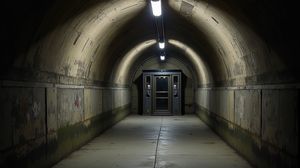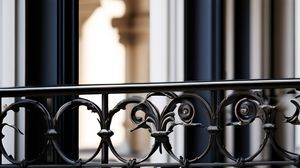
John Evelyn's Mulberry Tree in Deptford is a fascinating historical gem in London, situated within Sayes Court Garden. Said to have been planted by John Evelyn himself, a noted 17th-century diarist and horticulturalist, the tree stands as a living piece of history, offering visitors a glimpse into the past, where horticulture and history entwine.
This mulberry tree is reputed to be over 400 years old, making it a natural monument that beckons history lovers and tree enthusiasts alike. Its continued existence provides a tangible connection to the era in which John Evelyn strove to cultivate beauty and philosophy in his gardens.
There is a story associated with the tree and its surroundings, involving the infamous Russian Tsar, Peter the Great, who allegedly visited Sayes Court during his stay in England in 1698. Legend has it that Peter, a guest at Sayes Court, was somewhat destructive, apparently wheelbarrowing through Evelyn's cherished hedges, which may have included this very mulberry tree.
Over the centuries, the mulberry tree has witnessed incredible changes, outliving the house that Evelyn once famously inhabited. It now stands as a proud reminder of the estate's rich gardening legacy and a key feature of Sayes Court Garden's heritage.
The mulberry tree not only serves as a horticultural marvel but also as a source of inspiration for modern landscape design projects in the area, celebrating the contributions of Evelyn to the world of gardening.
This tree holds a special place in the community, with efforts dedicated to preserving its legacy for future generations. It stands as a symbol of the resilience and endurance of nature amidst urban development.

Making the Most of Your Visit:
Be sure to sit and spend a quiet moment near the tree. You can imagine what it must have been like in Evelyn's time, surrounded by peace and greenery, especially when you consider how rare such moments can be in modern-day London.
Look closely at the tree's bark and gnarled branches. These tell an intriguing story of survival and adaptation over the centuries. It's a living testament to the passing ages, so take your time to appreciate its natural artistry.
Bring along a notebook or journal to jot down any thoughts or drawings inspired by your surroundings. This spot has inspired many over the years, including the likes of John Evelyn himself. You never know what creative sparks might fly here.
Visit during mulberry season, if you can, which typically falls between July and August. There's something quite special about seeing the tree bearing fruit as it might have done hundreds of years ago.
If you're a history buff, it's worth reading up on Peter the Great's visit to Sayes Court before and while you're there. Having this context can make seeing the tree all the more vivid as you think about its place in history.

Visiting Times & Costs:
As of the latest information available, "John Evelyn's Mulberry Tree, Deptford" is indeed open to the public as part of Sayes Court Garden. Visiting the tree generally does not require an entrance fee, as it is located within a public space. However, it is essential to check if there are any specific events or temporary closures scheduled that might affect general public access, which are not uncommon in historic garden settings.
Opening Times:
- The garden is typically open year-round. However, it is best to visit during daylight hours to fully appreciate the tree and surrounding gardens.
Accessibility:
- For accessibility information, potential visitors should bear in mind that while the gardens generally accommodate entry, pathways may be uneven, and some areas might pose challenges for those with mobility issues.
As always with historical gardens, respecting the site helps preserve its legacy for future visitors.

Address & Map:

Nearby:























